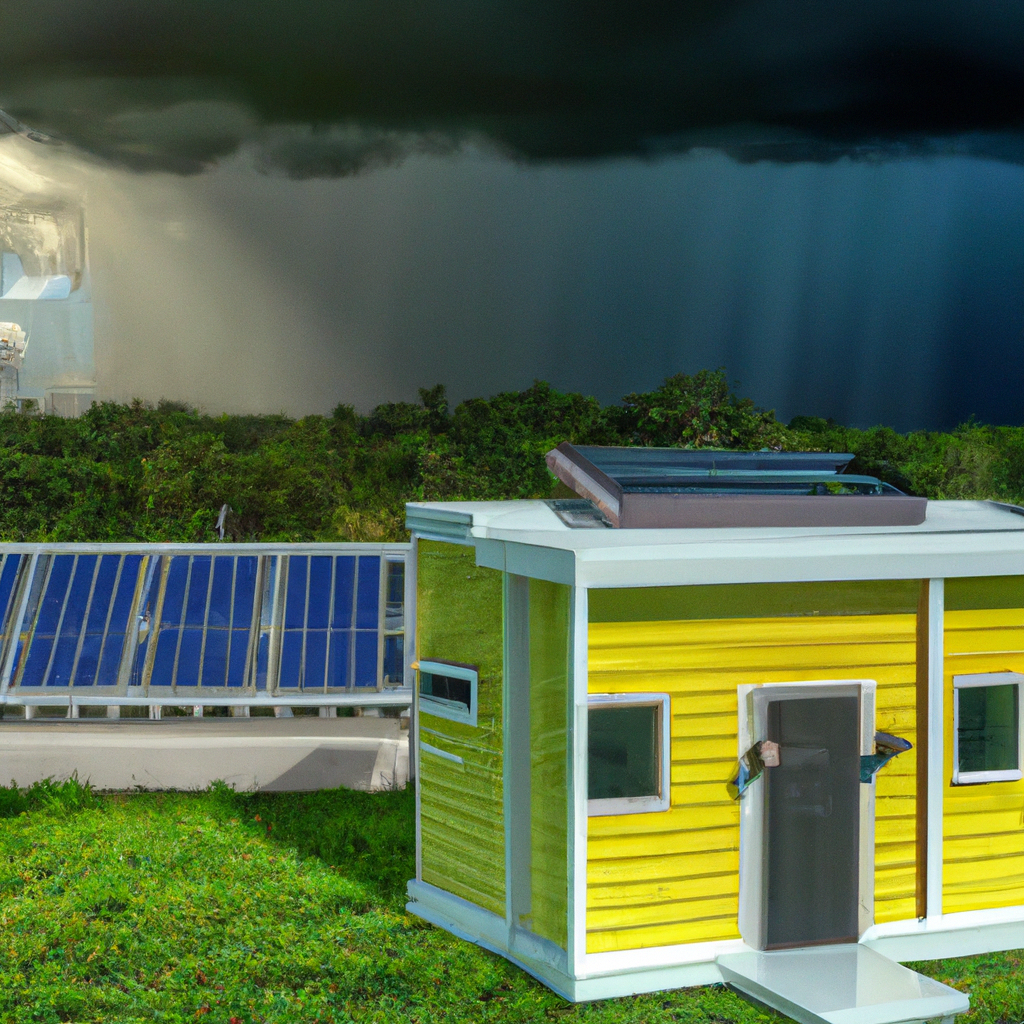I understand your concerns – you may be wondering how to get insurance for your tiny home. Rest assured, it’s easier than you think.
In this article, I’ll guide you through the unique challenges of insuring a tiny house and help you evaluate different insurance options. We’ll discuss factors to consider when choosing the right coverage, tips for documenting and appraising your tiny house, and what to do if something happens.
Let’s make sure your tiny house is protected, so you can live worry-free.
Key Takeaways
- Tiny house insurance provides coverage for the structure, personal property, and liability.
- It’s important to evaluate insurance options by considering factors such as coverage limits, deductibles, and premium costs.
- When selecting coverage, find a policy that offers a reasonable price without sacrificing necessary coverage.
- Documenting and appraising your tiny house, including taking photographs and creating an inventory, is essential for insurance purposes.
Understanding the Unique Insurance Challenges for Tiny Houses
As a tiny house owner, I must understand the unique insurance challenges that come with owning a tiny house.

Tiny house insurance policies are specifically designed to provide coverage for these unique structures. These policies typically offer protection for the structure itself, personal property inside the house, and liability coverage in case someone is injured on your property.
However, it’s important to be aware of the common exclusions in tiny house insurance. Some policies may exclude coverage for certain types of tiny houses, such as those on wheels or those that aren’t permanently affixed to the ground. Additionally, certain activities, like renting out your tiny house as a vacation rental, may also be excluded.
It’s crucial to carefully review the terms and conditions of your policy to ensure that you have the coverage you need for your tiny house.
Evaluating Different Insurance Options for Your Tiny House
When evaluating insurance options for my tiny house, I consider factors such as coverage limits, deductibles, and premium costs. It is important to carefully assess the coverage offered by different insurance providers to ensure that it adequately protects my tiny house against potential risks and damages. To make this process easier, I have created a table that compares the coverage options of three insurance providers:

| Insurance Provider | Coverage Limits | Deductibles | Premium Costs |
|---|---|---|---|
| Provider A | $100,000 | $500 | $500 |
| Provider B | $150,000 | $1,000 | $700 |
| Provider C | $200,000 | $1,500 | $900 |
Factors to Consider When Choosing the Right Coverage for Your Tiny House
I need to consider the factors that will help me choose the right coverage for my tiny house. When it comes to insurance premiums, it’s important to find a policy that offers a reasonable price without sacrificing necessary coverage.
I should compare quotes from different insurance providers to ensure I’m getting the best deal. Additionally, I need to carefully evaluate the coverage limits of each policy. This includes understanding what’s covered and what’s not, as well as any limitations or exclusions.
I should consider the value of my tiny house and its contents to determine the appropriate coverage limits. By taking these factors into consideration, I can choose the right insurance coverage that provides adequate protection for my tiny house.
Now, let’s explore some tips for documenting and appraising my tiny house for insurance purposes.

Tips for Documenting and Appraising Your Tiny House for Insurance Purposes
To ensure proper coverage, it’s essential to carefully document and appraise my tiny house for insurance purposes. The documenting process is crucial in providing evidence of the value and condition of my tiny house.
I’ll start by taking detailed photographs of the interior and exterior, capturing every angle and highlighting any unique features. Additionally, I’ll create a comprehensive inventory of all the belongings inside my tiny house, including their estimated value. This will help determine the appropriate insurance coverage needed to protect my assets.
To further support my appraisal, I’ll gather any relevant documents such as receipts for major purchases or upgrades.
Navigating the Claims Process: What to Do If Something Happens to Your Tiny House
Navigating the claims process can be overwhelming, but understanding your policy and promptly reporting any incidents is crucial to ensure a smooth resolution if something happens to your tiny house.

When filing a claim, it’s important to gather all the necessary documentation, such as photographs, receipts, and any other evidence to support your case. Be sure to provide detailed information about the incident, including the date, time, and location.
It’s also essential to review your insurance coverage limits to determine what expenses may be covered. The claims process can involve various steps, such as inspections and assessments, so it’s important to stay proactive and communicate with your insurance provider.
Frequently Asked Questions
Are Tiny Houses Covered Under Regular Homeowners Insurance Policies?
Tiny houses are not typically covered under regular homeowners insurance policies. However, there are specialized insurance options available. Factors to consider when insuring a tiny house include its value, location, and whether it’s stationary or mobile.
What Types of Coverage Options Are Available Specifically for Tiny Houses?
When it comes to insuring your tiny house, there are options specifically tailored for these unique homes. From coverage for mobile tiny houses to comprehensive policies, there’s a solution to protect your investment.

How Does the Appraisal Process Work for Insuring a Tiny House?
The appraisal process is an important step in getting insurance coverage for your tiny house. It involves assessing the value of your property to determine how much coverage you need.
Are There Any Specific Requirements or Considerations When Documenting a Tiny House for Insurance Purposes?
When documenting a tiny house for insurance purposes, it’s crucial to have important documentation in place. This includes proof of ownership, detailed photos, and an appraisal. These steps are essential in ensuring proper coverage options for your tiny house.
What Steps Should Be Taken to File a Claim if Something Happens to a Tiny House?
When something happens to your tiny house, it’s important to know the steps for filing a claim and how to handle insurance claims. Here’s what you need to do to ensure a smooth process.
Conclusion
In conclusion, insuring your tiny house may present unique challenges, but with careful evaluation and consideration of different insurance options, you can find the right coverage for your needs.

Documenting and appraising your tiny house is crucial in ensuring proper coverage, and in the unfortunate event of a claim, knowing how to navigate the process is essential.
By taking these steps, you can protect your investment and have peace of mind in your tiny house journey.
I’m Theodore, and I love tiny houses. In fact, I’m the author of Tiny House 43, a book about tiny houses that are also tree houses. I think they’re magical places where imaginations can run wild and adventures are just waiting to happen.
While tree houses are often associated with childhood, they can be the perfect adult retreat. They offer a cozy space to relax and unwind, surrounded by nature. And since they’re typically built on stilts or raised platforms, they offer stunning views that traditional homes simply can’t match.
If you’re looking for a unique and romantic getaway, a tree house tiny house might just be the perfect option.










